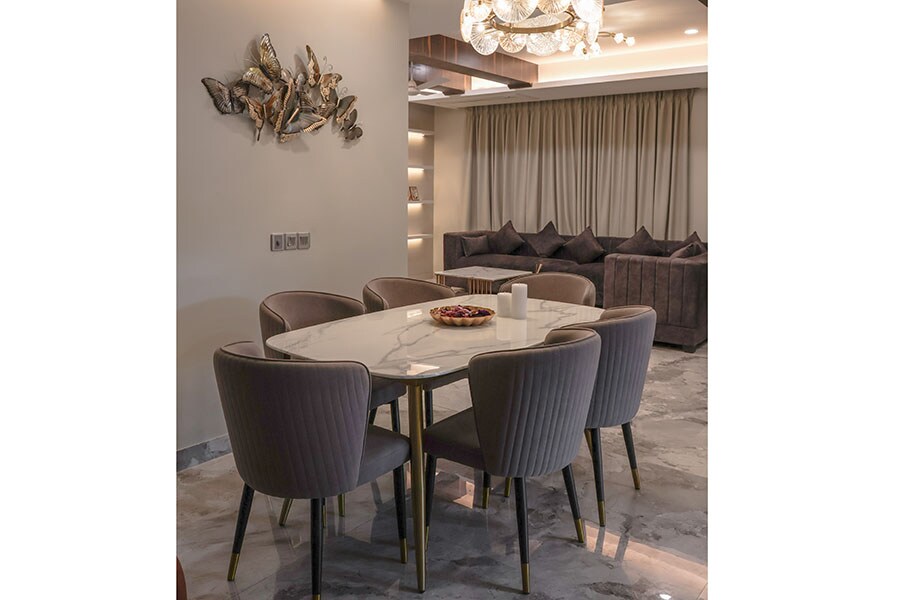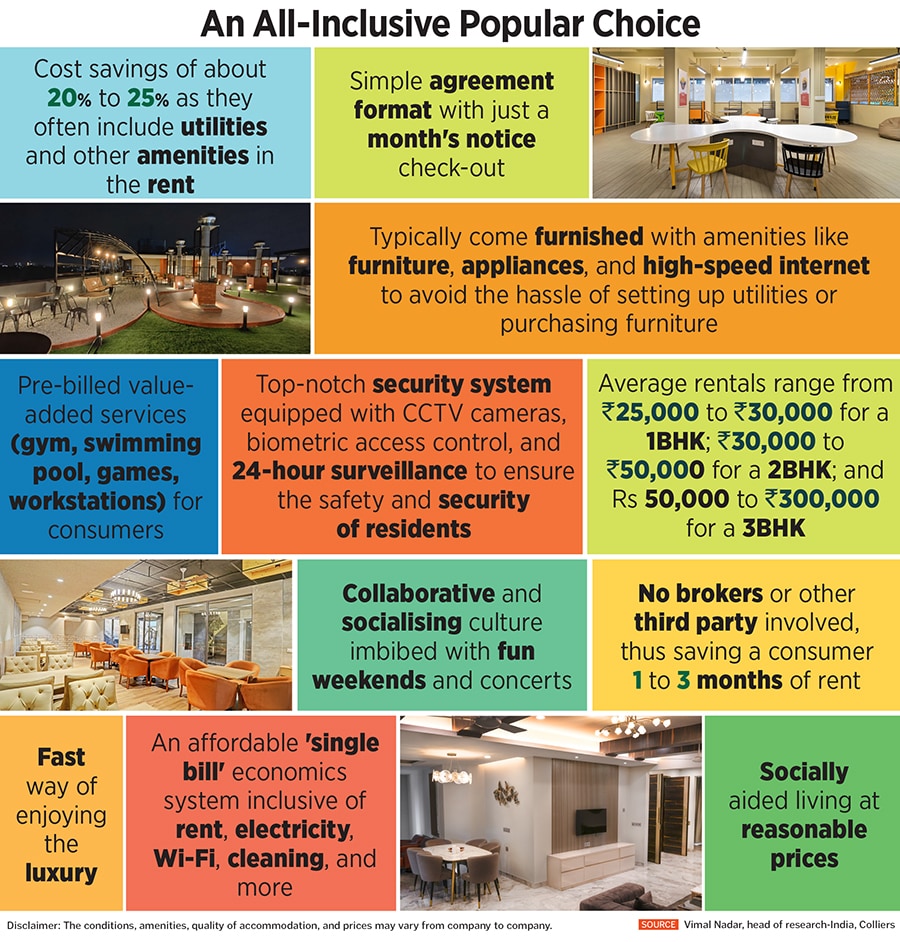
Swanky homes, pools, gourmet meals: Co-living goes luxe and stylish
With a growing number of youth in the workforce and an influx of student population, who are prioritising quality accommodation, co-living startups are shifting from offering basic models to a premium lifestyle experience
 At The Covie, the homes are fully-furnished, and residents can avail of nutrition measured meals, security-controlled rooms, and access work spaces along with a gym, and other exercise areas.
At The Covie, the homes are fully-furnished, and residents can avail of nutrition measured meals, security-controlled rooms, and access work spaces along with a gym, and other exercise areas.
High-end furnishings, smart home technology, professional housekeeping, gourmet meals on demand, laundry at the doorstep, and 24/7 assistance by top hospitality professionals.
Welcome to the world of luxury co-living, where homes feel no less than swanky hotel rooms.
Although the concept of co-living is more than a decade old in India, what has shifted is the focus to offer more premiumised spaces and luxurious homes rather than standard rooms with basic amenities. This change, say experts, is due to the growing number of millennials and an influx of student population, whose priority has become quality accommodation. Thus, these fully-furnished and well-maintained homes are now gaining popularity in India.
On the whole, the demand for co-living spaces in India has been on the rise since the end of 2021, says Vimal Nadar, head of research-India at a real estate consultancy, Colliers.
As of June 2021, the co-living space inventory, including luxury properties, exceeded 300,000 beds in India. In the next two years, the co-living segment is expected to cross 450,000 beds mainly driven by organised players. Even the occupancy levels are experiencing a recovery, increasing from 45 percent in 2020-2021 to 90 percent in 2022.




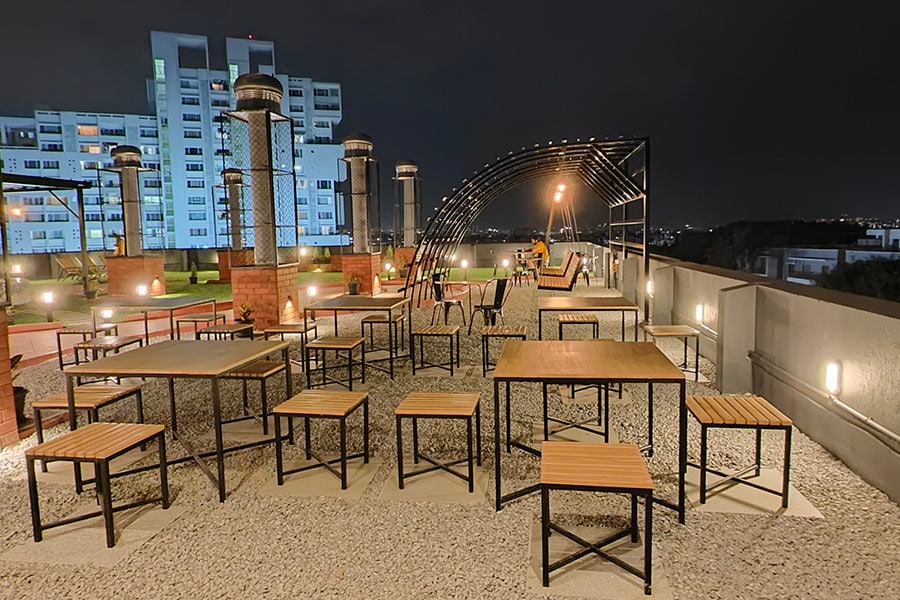
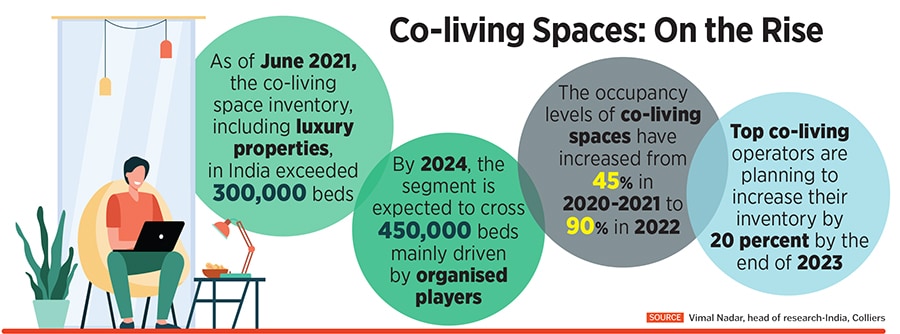
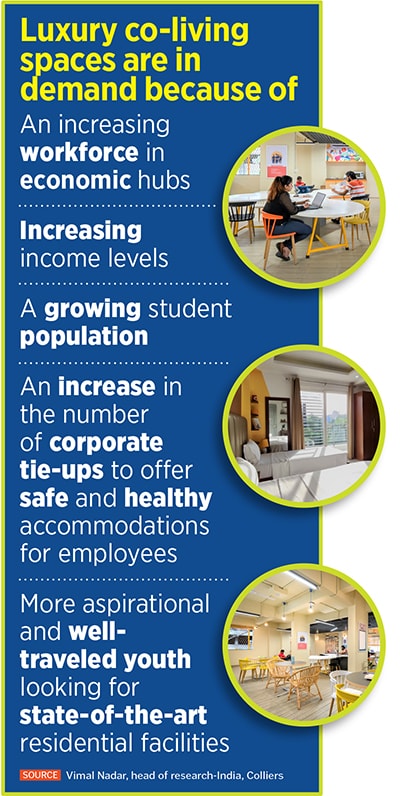 The USP of co-living spaces like Zolo is the focus on providing a personalised and high-end experience for residents that blends the best of co-living and hotel stays.
The USP of co-living spaces like Zolo is the focus on providing a personalised and high-end experience for residents that blends the best of co-living and hotel stays. 